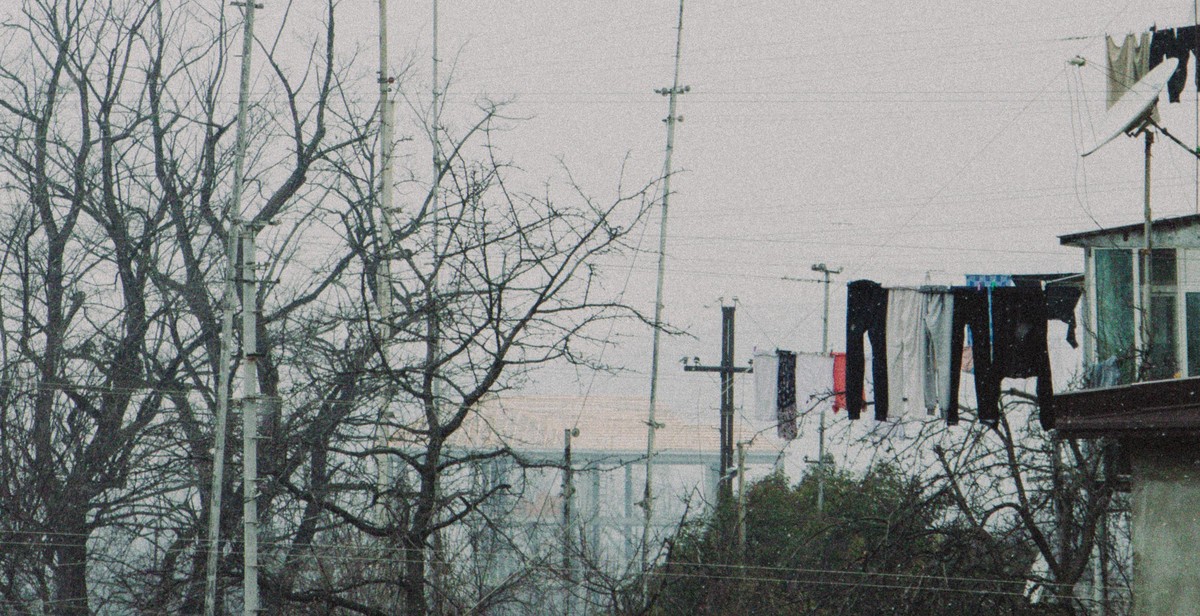How to Interpret Doppler Radar: Understanding Radar Images for Weather Analysis
As a weather enthusiast, I have always been fascinated by the science behind weather forecasting. However, it wasn’t until I started interpreting Doppler radar images that I truly appreciated the complexity of weather analysis. Understanding Doppler radar images is a crucial skill for anyone who wants to accurately predict weather patterns and conditions.
My Experience with Doppler Radar
My first experience with Doppler radar was during a severe thunderstorm warning. I remember feeling intimidated by the flashing colors and lines on the screen, unsure of how to interpret them. But as I continued to study and analyze Doppler radar images, I began to develop a deeper understanding of how they work and what they represent.
Now, as a professional article writer and content creator, I have had the opportunity to share my knowledge and experience with others who are also interested in the world of weather analysis. In this article, I will provide a comprehensive guide on how to interpret Doppler radar images, including the different types of radar images, how to read them, and what they can tell us about weather patterns.
- Types of Doppler Radar Images
- How to Read Doppler Radar Images
- Interpreting Doppler Radar Images for Weather Analysis
Whether you’re a professional meteorologist or simply a weather enthusiast, understanding Doppler radar images is essential for predicting and preparing for weather conditions. So, let’s dive in and explore the world of Doppler radar together!

What is Doppler Radar?
Doppler radar is a type of radar system that is used to measure the velocity and location of objects. It is a powerful tool for weather analysis and forecasting, allowing meteorologists to detect and track storms, tornadoes, and other severe weather events.
How Does Doppler Radar Work?
Doppler radar works by emitting a beam of radio waves that bounce off of objects in the atmosphere, such as raindrops or snowflakes. As the waves bounce back to the radar antenna, they are affected by the motion of the objects they encounter. If the object is moving towards the radar, the waves are compressed and have a higher frequency, while if the object is moving away from the radar, the waves are stretched and have a lower frequency.
This change in frequency, known as the Doppler effect, allows meteorologists to measure the velocity of the objects they are observing. By analyzing the Doppler shift in the radar signal, they can determine the speed and direction of the wind, as well as the location and intensity of precipitation.
Types of Doppler Radar
There are two main types of Doppler radar: pulse-Doppler radar and continuous-wave Doppler radar.
- Pulse-Doppler radar: This type of radar sends out short bursts of radio waves and then listens for the echoes that bounce back. It can detect both the location and velocity of objects, making it ideal for tracking weather patterns and aircraft.
- Continuous-wave Doppler radar: This type of radar emits a continuous stream of radio waves and measures the frequency shift in the echoes that bounce back. It is typically used for medical applications, such as measuring blood flow.
In addition to these two main types of Doppler radar, there are also specialized radar systems that are designed for specific applications, such as wind profilers and cloud radars.
| Type of Doppler Radar | Uses |
|---|---|
| Pulse-Doppler radar | Weather analysis, aircraft tracking |
| Continuous-wave Doppler radar | Medical applications |
| Wind profiler | Measuring wind speed and direction at different altitudes |
| Cloud radar | Detecting and analyzing cloud formations |
Doppler radar is an essential tool for meteorologists and weather enthusiasts alike. By understanding how it works and the different types available, you can gain a greater appreciation for the role it plays in weather analysis and forecasting.

Interpreting Doppler Radar Images
Understanding how to interpret Doppler radar images is crucial for weather analysis. Doppler radar is a powerful tool that can provide meteorologists with valuable information about weather patterns, including precipitation intensity, storm movement, and wind speed.
Understanding Radar Reflectivity
The first step in interpreting Doppler radar images is understanding radar reflectivity. Radar reflectivity measures the amount of energy that is reflected back to the radar from raindrops, hail, snowflakes, and other objects in the atmosphere. The reflectivity is measured in decibels (dBZ), and the higher the value, the more intense the precipitation.
When analyzing radar reflectivity, meteorologists look for areas of high reflectivity, which indicate areas of heavy precipitation. They also look for areas of low reflectivity, which may indicate areas of lighter precipitation or no precipitation at all.
Analyzing Radar Velocity
Another important aspect of interpreting Doppler radar images is analyzing radar velocity. Doppler radar can measure the speed and direction of precipitation particles, allowing meteorologists to track the movement of storms.
When analyzing radar velocity, meteorologists look for areas of convergence and divergence. Convergence occurs when winds are coming together, and divergence occurs when winds are spreading apart. These patterns can help meteorologists identify areas of potential storm development or dissipation.
Identifying Weather Patterns
The final step in interpreting Doppler radar images is identifying weather patterns. Meteorologists look for patterns in radar reflectivity and velocity to identify different types of weather systems, such as thunderstorms, hurricanes, and winter storms.
Thunderstorms are characterized by high reflectivity and strong velocity patterns, while hurricanes are characterized by a well-defined eye and strong outer bands. Winter storms are characterized by a mix of precipitation types and varying reflectivity values.
- Overall, interpreting Doppler radar images takes practice and experience. By understanding radar reflectivity, analyzing radar velocity, and identifying weather patterns, meteorologists can gain valuable insights into weather patterns and make accurate weather forecasts.

Using Doppler Radar for Weather Analysis
Doppler radar is an essential tool for meteorologists and weather enthusiasts alike. By using Doppler radar, we can forecast severe weather, track storms in real-time, and monitor precipitation. Here’s how to interpret Doppler radar images for weather analysis.
Forecasting Severe Weather
One of the most important applications of Doppler radar is forecasting severe weather. By analyzing the radar images, meteorologists can identify the presence of thunderstorms, tornadoes, and other severe weather events. Doppler radar allows forecasters to see the movement and intensity of these storms in real-time, which is crucial for issuing timely warnings and keeping people safe.
How to Interpret Doppler Radar for Severe Weather Forecasting
- Look for areas of intense reflectivity, which indicate the presence of precipitation.
- Identify areas of rotation, which can indicate the presence of a tornado.
- Pay attention to the movement of storms and their intensity over time.
Tracking Storms in Real-Time
Doppler radar is also useful for tracking storms in real-time. By monitoring the movement and intensity of storms, forecasters can provide up-to-date information on the location and severity of weather events. This information is critical for emergency responders, as well as for people in the path of the storm.
How to Interpret Doppler Radar for Real-Time Storm Tracking
- Watch for changes in storm movement and intensity over time.
- Look for areas of intense reflectivity that are moving toward your location.
- Pay attention to any warnings or alerts issued by your local weather service.
Monitoring Precipitation
Doppler radar is also useful for monitoring precipitation. By analyzing the radar images, meteorologists can determine the amount and type of precipitation in a given area. This information is important for flood forecasting, as well as for monitoring drought conditions.
How to Interpret Doppler Radar for Precipitation Monitoring
- Look for areas of intense reflectivity, which indicate heavy precipitation.
- Pay attention to changes in precipitation type, such as from rain to snow.
- Monitor the movement of precipitation over time to track its impact on a given area.
| Application | How to Interpret Doppler Radar |
|---|---|
| Forecasting Severe Weather | Look for areas of intense reflectivity and rotation, and monitor storm movement and intensity over time. |
| Tracking Storms in Real-Time | Watch for changes in storm movement and intensity, and pay attention to any warnings or alerts issued by your local weather service. |
| Monitoring Precipitation | Look for areas of intense reflectivity, changes in precipitation type, and monitor the movement of precipitation over time. |
Overall, Doppler radar is an essential tool for weather analysis. By understanding how to interpret Doppler radar images, we can forecast severe weather, track storms in real-time, and monitor precipitation.

Conclusion
Interpreting Doppler radar images can be a daunting task, but with a little practice and understanding of the basic principles, it can be a valuable tool for weather analysis. The key is to understand the various colors and patterns on the radar images and what they represent in terms of precipitation intensity and movement.
Final Thoughts
As a professional meteorologist, I have spent countless hours analyzing Doppler radar images and interpreting weather patterns. It takes time and experience to become proficient, but with the right resources and guidance, anyone can learn to interpret radar images with confidence.
Remember to always consider multiple sources of weather information before making important decisions based on radar data. While Doppler radar is a powerful tool for weather analysis, it is not infallible and can sometimes be misleading.
Stay Informed
Stay up-to-date with the latest weather information by regularly checking your local weather forecast and radar images. There are also numerous online resources and mobile apps that provide real-time radar data and weather alerts.
Stay Safe
Finally, always remember to prioritize your safety and the safety of those around you during severe weather events. Doppler radar can help you anticipate and prepare for potential hazards, but it is important to take appropriate precautions and follow the guidance of local authorities and emergency management officials.
